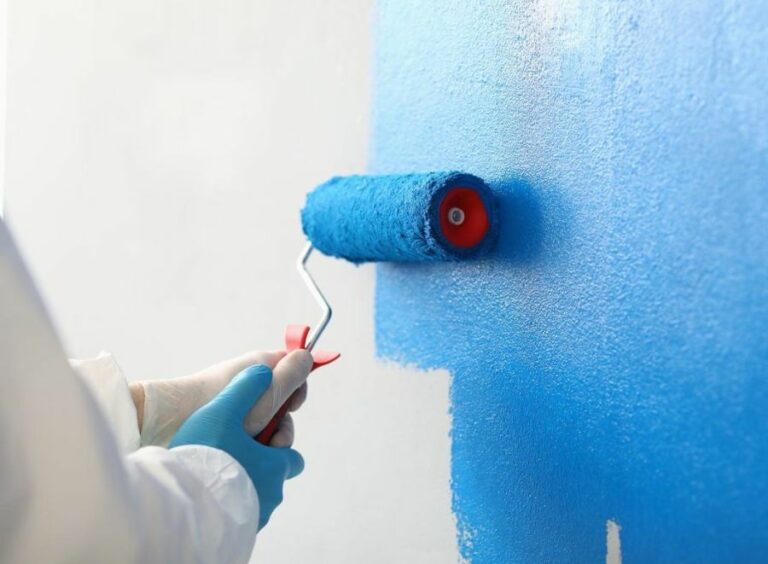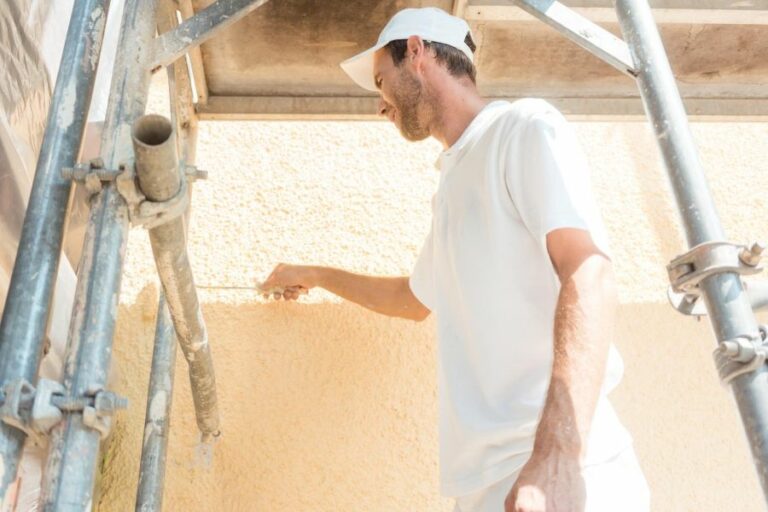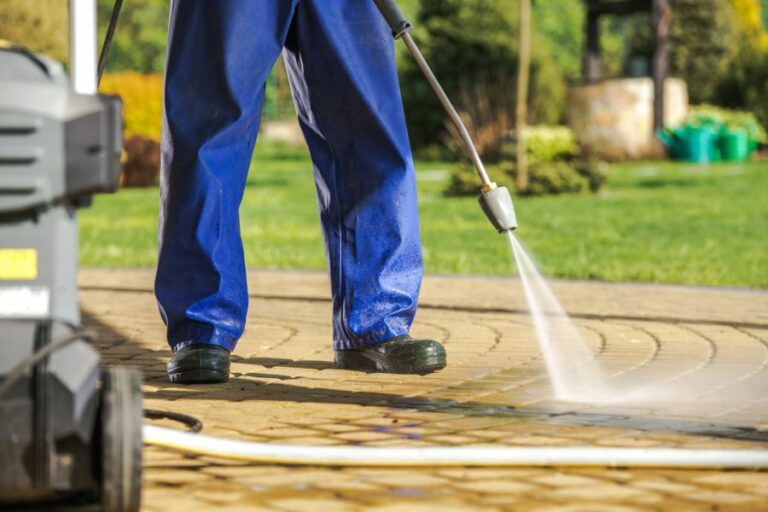Invest In These Tools For Ideal Surface Prep. What Pros Say
Are you looking to achieve that perfect surface finish for your project but unsure about which tools can help you get there? You can put an end to your worries because we have got you covered! In this discussion, we will introduce you to a selection of must-have tools that will ensure ideal surface preparation, giving your project the professional touch you’ve been searching for.
Invest in these tools for ideal surface prep:
Invest in a pressure washer for efficient cleaning, various sanding tools (orbital sander, detail sander, and sanding blocks) for smooth surfaces, scrapers and putty knives for paint removal and patching, surface cleaners and degreasers, and proper protective gear for safety during surface preparation. These tools ensure a clean, smooth surface ready for painting or coating projects.

Discover the essential tools for achieving flawless surface prep every time. We’ve compiled a list of must-have items that will transform your DIY projects. Read on to learn about these game-changing tools and witness a remarkable improvement in your surface preparation process!
Contents
- 1 Discover Essential Tools for Perfect Surface Preparation
- 2 Explore Equipment Utilized in Surface Preparation Processes
- 3 Diverse Tools & Equipment for Ship Surface Preparation
- 4 Understanding the Fundamentals of Surface Preparation
Discover Essential Tools for Perfect Surface Preparation
Surface preparation is a crucial step in any painting or coating project. It ensures that the surface is clean, smooth, and free of contaminants, which helps the paint adhere properly and last longer.
• Pressure Washer
A pressure washer is a highly effective tool for cleaning surfaces. This powerful machine uses high-pressure water to blast away dirt, grime, and loose paint, leaving a clean and ready surface.
Pressure washing is especially useful for large outdoor surfaces like exterior walls, decks, and driveways. I highly recommend investing in a good-quality pressure washer, as it will save you time and effort in surface preparation.
For more information on pressure washing, you can visit the Environmental Protection Agency’s guidelines on proper usage and environmental considerations.
• Sanding Tools
Sanding is an essential step in surface preparation, especially for interior projects. It helps to smoothen surfaces and remove imperfections such as scratches, dents, and old paint. There are various types of sanding tools available, and I recommend investing in the following:
– Orbital Sander
An orbital sander is a versatile and efficient tool for sanding flat surfaces. Its random orbital motion allows it to remove material quickly without leaving any swirl marks.
Orbital sanders are available in multiple sizes, and depending on your project, you can choose a small one for tight spaces or a larger one for broader surfaces.
– Detail Sander
A detail sander, also known as a mouse sander, is a small, handheld tool designed for sanding tight corners and intricate details. Its compact size and pointed sanding pad make it perfect for reaching into narrow spaces, such as window sills and door frames.
– Sanding Blocks and Sandpaper
For smaller projects or areas where you need more control, sanding blocks and sandpaper are essential tools. Sanding blocks provide better grip and even pressure distribution, while sandpaper sheets come in various grits for different levels of smoothness.
• Scrapers and Putty Knives
Scrapers and putty knives are invaluable tools for removing loose or peeling paint and applying patching compounds and fillers. I recommend investing in quality scrapers and putty knives in various sizes and shapes to tackle different tasks.
– Paint Scraper
A paint scraper is a handheld tool with a sharp, flat blade that can remove old paint and other coatings. Look for a scraper with a comfortable grip and sturdy blade that can withstand repeated use.
– Putty Knife
A putty knife has a flexible blade that is perfect for applying and smoothing patching materials like joint compound or wood filler. They come in different widths; ideally, you should have a few sizes in your toolkit to cover different applications.
• Surface Cleaners and Degreasers
Before painting, it is essential to ensure that surfaces are free of contaminants such as grease, oil, and dirt that can hinder paint adherence. For this purpose, surface cleaners and degreasers are crucial:
– TSP Cleaner
Trisodium phosphate (TSP) is a powerful, multi-purpose cleaner that can remove grease, mold, mildew, and other stubborn stains. It can be diluted in water and used to clean multiple surfaces, including wood, metal, and concrete.
However, TSP can be harmful to the environment, and many areas regulate its usage. In these cases, a TSP substitute cleaner can do the job effectively and safely.
– Degreaser
A degreaser is a specialized cleaner designed to remove grease and oil from surfaces. These cleaners are particularly useful for kitchens, garages, and other areas susceptible to grease buildup.
Look for a degreaser compatible with the type of surface you are working on, and follow the manufacturer’s instructions for the best results.
• Protective Gear
Lastly, investing in proper protective gear is essential for your safety during surface preparation. This includes safety glasses or goggles, gloves, and respiratory protection such as a dust mask or respirator. Protecting yourself from debris, dust, and chemicals is crucial to avoid short- and long-term health risks.
In conclusion, achieving ideal surface preparation is vital for the success of any painting or coating project.
Investing in the right tools, like pressure washers, sanding tools, scrapers, and cleaning products, will not only improve the final result but also save you time and effort.
By following these recommendations and properly equipping yourself, you can ensure a smooth, clean surface that is ready for a fresh coat of paint.
Explore Equipment Utilized in Surface Preparation Processes
Surface preparation is a critical step in many industries, including construction, painting, and manufacturing. Properly preparing a surface can ensure a high-quality, long-lasting finish.
• Abrasive Blasting Equipment
Abrasive blasting is a common surface preparation method used to remove rust, old paint, and other contaminants, as well as to create a desired surface profile for improved adhesion. There are several types of abrasive blasting equipment available.
– Sandblasting Equipment
Sandblasting equipment utilizes compressed air to propel a stream of abrasive material (such as sand) at a surface. It is widely used in construction, automotive, and marine industries for heavy-duty cleaning and preparation tasks.
For best results, it is important to choose the appropriate sandblasting media for the specific project. Some common choices include silica sand, glass beads, and steel shot.
– Soda Blasting Equipment
Soda blasting equipment uses baking soda as the abrasive medium, making it a suitable option for delicate and sensitive surfaces. It is often used in automotive and aerospace industries for removing paint without damaging the underlying material.
Due to its gentle nature, it is not recommended for heavy-duty applications.
– Dry Ice Blasting Equipment
Dry ice blasting equipment employs solid carbon dioxide (dry ice) as the abrasive material. This environmentally friendly method is popular in the food processing and industrial cleaning sectors since it leaves no residue behind.
Additionally, dry ice blasting is ideal for cleaning delicate components such as electrical systems.
• Power Tools and Attachments
Power tools are essential for various surface preparation tasks, including grinding, polishing, and scraping. Key power tools used in surface preparation are grinders, sanders, and rotary hammers.
– Grinders
Angle grinders and die grinders are versatile power tools used for stock removal, smoothing edges, and cutting through metal, concrete, or masonry.
Depending on the application and material being worked on, they require an appropriate grinding wheel or attachment, such as a flap disc, wire brush, or grinding stone.
– Sanders
Orbital sanders and belt sanders are used for sanding and smoothing surfaces, typically wood, metal, or plastics, in preparation for painting, coating, or other finishing processes. It is essential to select the right type of sandpaper grit and tool speed for the specific material and desired finish.
– Rotary Hammers
Rotary hammers are powerful tools designed for breaking, chipping, and drilling into concrete, masonry, or metal surfaces. Using the appropriate chisel or drill bit is crucial for effective surface preparation.
Rotary hammers can be equipped with dust extraction systems to minimize airborne dust and maintain a cleaner work environment.
• Surface Preparation Chemicals
A variety of chemicals, including cleaners, degreasers, and paint strippers, play an essential role in surface preparation. These products help remove dirt, oil, and other contaminants and ensure a clean surface for further processing.
– Cleaners and Degreasers
Cleaners and degreasers are designed to break down and remove grease, oil, and other contaminants from surfaces. They can be applied using a brush or a pressure washer for larger areas.
Properly cleaning and degreasing surfaces before painting or applying adhesives can lead to improved adhesion and a better overall finish.
– Paint Strippers
Paint strippers are chemicals that soften and dissolve paint, allowing it to be more easily removed from the surface. They are often used in automotive and aerospace industries for paint removal during repairs or refinishing.
It is important to choose the correct paint stripper for the specific paint type and follow safety guidelines during application and disposal.
• Surface Preparation Accessories
Several essential accessories contribute to an efficient surface preparation process, such as dust collection systems, vacuums, and personal protective equipment (PPE).
– Dust Collection Systems and Vacuums
Dust collection systems and vacuums help contain and remove dust and debris generated during the surface preparation process. They can be integrated into power tools or used as standalone equipment, such as shop vacuums.
Maintaining a clean work environment is crucial for both worker safety and achieving a high-quality finish on the prepared surface.
– Personal Protective Equipment
Safety must be a top priority when performing surface preparation tasks. Appropriate PPE, including safety glasses, gloves, hearing protection, and respiratory protection, should be worn at all times to minimize the risk of injury and exposure to harmful dust and chemicals.
In conclusion, proper surface preparation is vital to achieving ideal results in various industries. Understanding and selecting the right equipment for each task ensures efficient and effective surface preparation, leading to improved performance and long-lasting finishes.
Diverse Tools & Equipment for Ship Surface Preparation
Surface preparation is an essential process that ensures a surface is ready for painting, coating, or any other application. It helps maintain the integrity of the surface, prevent corrosion, and reduce potential adhesion failures.
In the maritime industry, surface preparation is crucial in maintaining the ship’s structural integrity and limiting its susceptibility to corrosion.
• Abrasive Blasting Techniques
– Sand Blasting
One of the most common surface preparation techniques on board ship is sand blasting. It involves projecting abrasive sand materials under high pressure onto the surface to remove contaminants, rust, and old paint.
Sand blasting is highly effective in cleaning large areas and provides an excellent surface for applying new coatings. However, it creates a lot of dust and poses environmental hazards, requiring appropriate safety measures and waste disposal.
– Grit Blasting
Grit blasting, also known as abrasive blasting, is the process of projecting abrasive grit at high pressure onto the surface to remove contaminants, rust, and old paint. Grit blasting is highly effective in cleaning large areas and provides a good surface for applying new coatings.
This method is often preferred over sandblasting due to its lesser environmental impact and increased efficiency. The particulate matter produced during grit blasting can also be more easily collected and recycled, reducing waste and promoting sustainability.
– Shot Blasting
Shot blasting is another abrasive blasting technique where a small steel shot is projected at high speed onto the surface. This method helps remove contaminants, rust, and old paint, resulting in a smooth and clean surface.
The SSPC (Society for Protective Coatings) provides industry standards for shot blasting, ensuring the effectiveness and proper use of this technique.
• Mechanical Surface Preparation
– Grinders and Sanders
Grinders and sanders are essential mechanical tools for surface preparation on board ships. Handheld grinders and sanders come in various configurations, speeds, and abrasives, making them ideal for smaller, intricate surfaces or spot repairs.
These tools are used to remove surface contaminants and old paint, providing a smooth, clean surface for the new coating.
– Scrapers and Brushes
Scrapers and brushes are manual tools often used for small, localized areas of surface preparation. Wire brushes can be hand-held or fitted onto power tools and effectively remove loose paint, rust, and contaminants from surfaces.
When using scrapers, it’s essential to work in one direction and always ensure the scraper’s edge is sharp to prevent gouging or damage to the surface.
– Scaling Hammers and Needle Scalers
Scaling hammers and needle scalers are pneumatic tools that use compressed air to remove surface contaminants, rust, and old paint with high-frequency impacting force. These tools work efficiently on large surface areas where manual methods may be too labor-intensive and time-consuming.
• Chemical Surface Preparation
– Degreasing or Chemical Cleaning
Degreasing or chemical cleaning involves using solvents or cleaners to remove oils, grease, and other surface contaminants. This method is important in creating a clean surface to ensure proper adhesion of coatings and paints.
Some chemical cleaning agents are also used to remove old coatings or soften built-up rust for ease of removal. It is essential to follow specific manufacturer instructions and safety precautions when using chemical cleaning agents.
– Acid Pickling
Acid pickling is a chemical process used to remove rust and corrosion from surfaces. It involves immersing the surface in a mixture of acids and other chemicals, which react with the rust and contamination, loosening them from the surface.
This method is generally used as a pre-treatment before further surface preparation techniques. Proper pickling procedures should be followed, along with adequate safety and environmental precautions.
• Surface preparation tools and equipment maintenance
To ensure the effectiveness and longevity of these various tools and equipment, it is crucial to maintain them regularly. This may include cleaning and lubricating moving parts, replacing worn or damaged components, and ensuring the proper storage of tools to prevent rust or damage.
In conclusion, effective surface preparation is essential to maintain a ship’s structural integrity and limit its susceptibility to corrosion. Various tools and equipment are utilized in the process, each with its benefits and drawbacks, depending on the ship’s specific needs.
Familiarizing yourself with these methods and selecting the appropriate tools and equipment for the task at hand can significantly improve the lifespan and performance of the ship’s surface.
Understanding the Fundamentals of Surface Preparation
Surface preparation, often abbreviated as “surface prep,” refers to the process of treating and preparing a material’s surface to accept some form of coating, adhesive, or protective layer more efficiently.
In most cases, this process is crucial to achieve a desirable finish, protect the material, and extend its lifespan. Some common materials that require surface preparation include metals, concrete, wood, and plastic.
• Importance of Surface Preparation
To understand the importance of surface preparation, it is essential to highlight the primary goals behind this process:
– Adhesion
Whether it’s paint, epoxy, or any other coating or adhesive, proper surface preparation ensures that the coating material adheres effectively to the surface. This minimizes the risk of the coating, adhesive, or sealant failing and guarantees long-lasting effects.
– Durability
Another crucial aspect of surface preparation is enhancing the durability of the substrate or the base material. By removing contaminants, correcting imperfections, and ensuring an even surface, the material is adequately protected against corrosion, decay, and other forms of structural compromise.
– Aesthetics
A smooth, well-prepared surface results in a more polished and visually appealing final product. Surface preparation eliminates imperfections and inconsistencies, thereby creating a uniform surface for the application of various finishing materials.
• Types of Surface Preparation Techniques
There are numerous methods for surface preparation, each tailored to various materials and applications. Popular surface preparation techniques include:
– Cleaning
Cleaning is a fundamental step in surface preparation, as it removes foreign matter, such as dirt, grease, and contaminants, from the surface. Cleaning methods can involve simple hand-wiping with a rag, using solvents or chemical agents, or employing high-pressure water blasting.
– Abrasive Blasting
Abrasive blasting is a powerful method for cleaning, shaping, and texturing surfaces by propelling abrasive media at high velocity onto the substrate.
It removes any existing coatings, rust, or scale and provides a rough surface profile that improves the adhesion of the coatings or adhesives applied. Common types of abrasive blasting include sandblasting, bead blasting, and shot blasting.
– Grinding and Polishing
Grinding and polishing are mechanical methods used for preparing surfaces to create a smooth and even finish. Grinding involves using abrasive wheels or discs to remove material, while polishing uses fine abrasives, buffing pads, or cloth to achieve a high gloss finish.
– Etching
Etching is a chemical process that uses acid or other reactive solutions to roughen, pattern, or clean a surface. This process is often used for preparing metals, glass, and silicon wafers in the electronics industry.
– Priming
Priming is the application of a preliminary coating to improve the adhesion and performance of the finishing materials. Primers are specifically formulated to create a stable, uniform base that ensures a proper bond between the substrate and the topcoat.
• Surface Preparation Standards
Numerous industry standards and guidelines provide specific requirements for surface preparation based on the type of substrate being treated and the intended application.
Some key organizations that develop and maintain surface preparation standards include:
- The Society for Protective Coatings (SSPC)
- National Association of Corrosion Engineers (NACE)
- American Concrete Institute (ACI)
- International Concrete Repair Institute (ICRI)
Adherence to these standards helps ensure consistent and high-quality results for surface preparation and subsequent coating or adhesive applications.
• Recommendations for Successful Surface Preparation
Based on personal experience, I recommend the following best practices to achieve successful surface preparation:
– Assess the Surface
Before beginning the surface preparation process, thoroughly assess the surface to determine its existing condition and any specific requirements. Evaluate factors such as the presence of existing coatings, contaminants, or damage.
– Choose the Appropriate Method
Select the surface preparation technique(s) best suited to the specific substrate and application. Consider factors such as the required surface profile, method effectiveness, safety, and environmental impact.
– Follow Industry Standards
Adhere to applicable industry standards and guidelines. These standards serve as valuable resources for ensuring proper surface preparation and achieving desired outcomes.
– Monitor and Inspect
Regularly monitor the surface preparation process and inspect the surface following preparation to ensure desired results have been achieved. Proper quality control minimizes the chances of a flawed finish or inadequate adhesion.
In conclusion, surface preparation is a crucial aspect of achieving an optimal adhesion, protection, and overall finish for various materials.
By understanding the importance, methods, and standards behind this process, one can guarantee a successful application of protective or decorative coatings and enhance the longevity and appearance of their projects.







